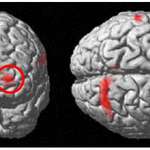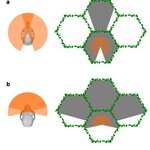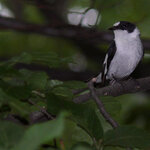Science category landing
Social Sciences

The United Nations (UN) to show their sisu* marked today, 16 October, as the "World Food Day" while yesterday, 15 October 2008, as the first-ever "International Day of Rural Women."
UN Secretary-General Ban Ki-moon has issued a call for greater appreciation of rural women's role in providing food and incalculable support they give to their communities.(1) Some 428 million women (and 608 million men) work in the agricultural sector in the world. We must remember them in our 'green' future considerations.
The Secretary-General urged countries to prioritize rural women’s needs at the upcoming "…

Better self-control is linked to higher intelligence. But until now psychologists have been unsure exactly why.
Now, researchers at Yale University are the first to report a clue that's helping to understanding why there is a tendency for more intelligent individuals to resist smaller, sooner rewards, while the preference for immediate rewards is associated with lower intelligence (IQ).
The study, reported in the Sept. 9th issue of the journal 'Psychological Science,' is the first to investigate--and identify--the neural mechanisms that account for this relationship.
The idea is relevant to…

The advantage of using two eyes to see the world around us has long been associated solely with our capacity to see in 3-D. Now, a new study from a scientist at Rensselaer Polytechnic Institute has uncovered a truly eye-opening advantage to binocular vision: our ability to see through things.
Most animals — fish, insects, reptiles, birds, rabbits, and horses, for example — exist in non-cluttered environments like fields or plains, and they have eyes located on either side of their head. These sideways-facing eyes allow an animal to see in front of and behind itself, an ability also known as…

Is sleep essential? The answer seems obvious, since we all have to do it, but to a sleep scientist, the question of what constitutes sleep is so complex that scientists are still trying to define the essential function of something we do every night.
The search for the core function of sleep can seem as elusive as the search for the mythological phoenix, says Chiara Cirelli, an associate professor of psychiatry at the University of Wisconsin School of Medicine and Public Health in Madison.
Some scientists argue that sleep is merely a way to impose a quiet, immobile state (rest), and isn't…

Researchers at the University of Birmingham say they have uncovered new information about the way that we perceive fast moving, incoming objects – such as tennis or cricket balls.
The new research, published today in PNAS, studies why the human brain has difficulty perceiving fast moving objects coming from straight ahead; something that should be a key survival skill. The research has implications for understanding how top-class sportspeople make decisions about playing a shot but could also be important for improving road safety and for the development of robotic vision systems.
The…

Researchers have discovered that a frog that lives near noisy springs in central China can tune its ears to different sound frequencies, much like the tuner on a radio can shift from one frequency to another. It is the only known example of an animal that can actively select what frequencies it hears, the researchers say.
The findings, from a collaborative effort led by the University of Illinois and the University of California at Los Angeles, appear this week in Proceedings of the National Academy of Sciences. The research team also included scientists from the Chinese Academy of Sciences…

In some ways, your body's thoughts and actions are like a complex series of water faucets but the spigots open or close in response to signals. Each thought or action sends a million electrical signals pulsing through your body.
At the heart of the process of generating these electrical impulses is the ion channel.
Ion channels belong to a special class of proteins embedded in the oily membranes of the cell. They regulate the movement of charged particles, called ions, into and out of the cell. Much like water faucets that can be controlled by turning a knob, channels open or close in…

Humans often choose partners based on behavioural keys that are displayed during social interactions. The way we behave in different social contexts can reflect personality traits or temperament that may inspire long-term love. Behavioural norms that we perceive as sexually attractive are not culturally or evolutionarily arbitrary.
However, personality-mediated sexual selection is not just the privilege of mankind. László Garamszegiand colleagues at the University of Antwerp and at Eötvös University, Budapest used bird song as a model to investigate whether behavioural traits involved in…

"Don't tug on that, you never know what it might be attached to ...," said Buckaroo Banzai while doing brain surgery in an early scene from one of the greatest science fiction movies of all time.
He couldn't have been more correct. A complete high-resolution map of the human cerebral cortex, the outer layer of the brain responsible for higher level thinking, has been created and it identified a single network core (or hub) that may be key to the workings of both hemispheres of the brain - detailing millions of neural fibers.
The work by the researchers from Indiana University, University of…

We all know that light effects the growth and development of plants but a new paper by Nathalie Hoang et al., published in PLoS Biology examines the effects light has on humans and animals.
In plants, cryptochromes are photoreceptor proteins which absorb and process blue light for functions such as growth, seedling development, and leaf and stem expansion. Cryptochromes are present in humans and animals as well and have been proven to regulate the mechanisms of the circadian clock. But how they work in humans and animals is still somewhat of a mystery.
When plants are exposed to blue light…